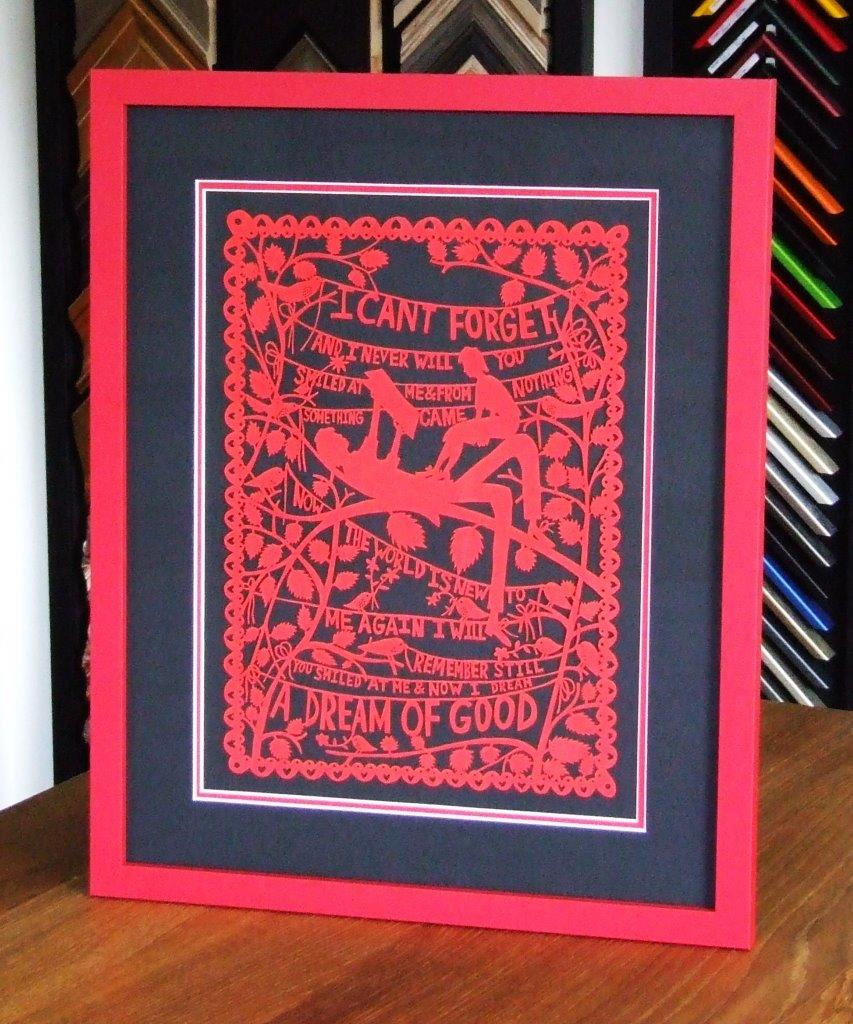The True Cost of Framing
- Jon - Otters Pool Studio
- Aug 1, 2018
- 4 min read

It is often assumed that bespoke framing is the most expensive option when it comes to getting artwork and items framed, but this statement doesn't consider the bigger picture, and the difference between 'cost' and 'value'.
Below is an adaptation of an article we wrote for the Guildford Art Society magazine back in 2016, which addresses the pros and cons of bespoke framing alongside alternative options.
To make this comparison, I’ve looked at four options: Local framer, internet framer, ready-made frames, and recycling. There are many components to consider when making this comparison, but materials are only a small part.
The frames themselves can be made from a variety of materials. Many ready-made frames are made from MDF to keep costs low, but unsealed MDF frames and backing boards can leak out formaldehyde fumes and MDF dust is also a dangerous irritant, so care should be taken when drilling, sanding and screwing into the frames. There is also an increasing amount of plastic frames coming onto the market with very realistic looking finishes, and are used extensively in mail order because they are lighter and cheaper to ship. They offer a cost-effective alternative to real wood and some finishes are beautiful, but also tend to shatter irreparably if dropped, and the waste is not environmentally friendly as it doesn’t degrade. Real wood frames can be a little more hardy and repairable after little accidents, and many mouldings are now FSC certified from sustainable forests. Be careful if recycling old frames, especially if bought from charity shops or car boot sales, as rot, mould and woodworm can be a common problem – not something you want to introduce to your artwork, or indeed the home.
Glazing is also a minefield of options. Most couriers don’t insure picture frames containing glass, so mail order framers will often use acrylic or styrene. Whilst safe to ship, most plastic glazing will scratch easily and collect dust because of the static it holds. Ready-made frames might have plastic or thinner glass, rather than the quality float glass that a framer would opt for. Indeed, many framers stock a wide range of glass, including UV filtering and the relatively new anti-reflective glass (not non-reflective – that’s different!) that is almost invisible. Ask your framer to see a sample – I will guarantee you will be amazed! Be careful when recycling frames, as acid leached from old mounts can etch the surface of the glass leaving a visible mark, even after extensive cleaning.

On the subject of mounts, the quality of mountboard is assessed by its conservation properties. Cheap mountboard will contain acid and lignin – a chemical that causes it to go brown after time. Both the acid and the lignin will leach into your artwork over time, causing damage. To avoid this, make sure you select an acid and lignin free board. The same goes for backing board. I’ve already mentioned the dangers of MDF, as used in the back of most ready-made frames, but using standard cardboard, grey-board or even wood slats will also leach acid into your artwork from the back. Make sure you use a barrier sheet if this is the case, or ideally use a conservation product with a water-resistant surface. As I mentioned at the start, the materials are only half the story. When you order a frame online, or purchase a ready-made, or recover an old frame from the attic, you are then faced with the task of putting your new frame together yourself. What do you use to attach the picture to the mount? Masking tape? Parcel tape? Archival hinging tape? Do you seal the frame to keep the dust and bugs out? If you do, do you use more parcel tape, self-adhesive paper tape, or gummed tape? Are the mitres tight, does the glass sparkle, are the hangings suitable?
Recycling an existing frame or buying a ready-made frame has the potential to save you a few pounds over a bespoke frame, but the size is fixed, so you may have to have a new mount cut to fit (eating into your cost saving), possibly with uneven borders or cropping out some of your picture, and you won’t have the massive range of options that a bespoke framer would offer.
A bespoke framer, either local or online, can give you more options and will make your frame to the exact size required. This is going to cost more, of course, but the aesthetics are not compromised. With online framing, you will have to make the design decisions yourself – choice of frame, mount width and options (single mount, double mount, v-groove, deep bevel, black-core etc.) and you only visualise an artificial image on screen. The website will do whatever you tell it to do. Your local framer will help to go through the options and suggest alternatives with you, advise if something doesn’t look right, and mock-up the frame so that you can see it and feel it, then complete the whole job for you, fitting the picture into the mount, fitting the frame together, sealing it up, and all using quality materials and with quality workmanship. Bespoke frames ordered online may be cheaper, but you are only getting half of the job done – you are performing most of the actual work yourself, and in the event of something being wrong, you have nobody to easily go back to.
In summary, your local framer will add so much more value to the presentation of your artwork than the small premium in the final cost, and might not be as expensive as you think. Just consider when comparing the final price, exactly what you are getting for your money, and the difference between ‘cost’ and ‘value’.






